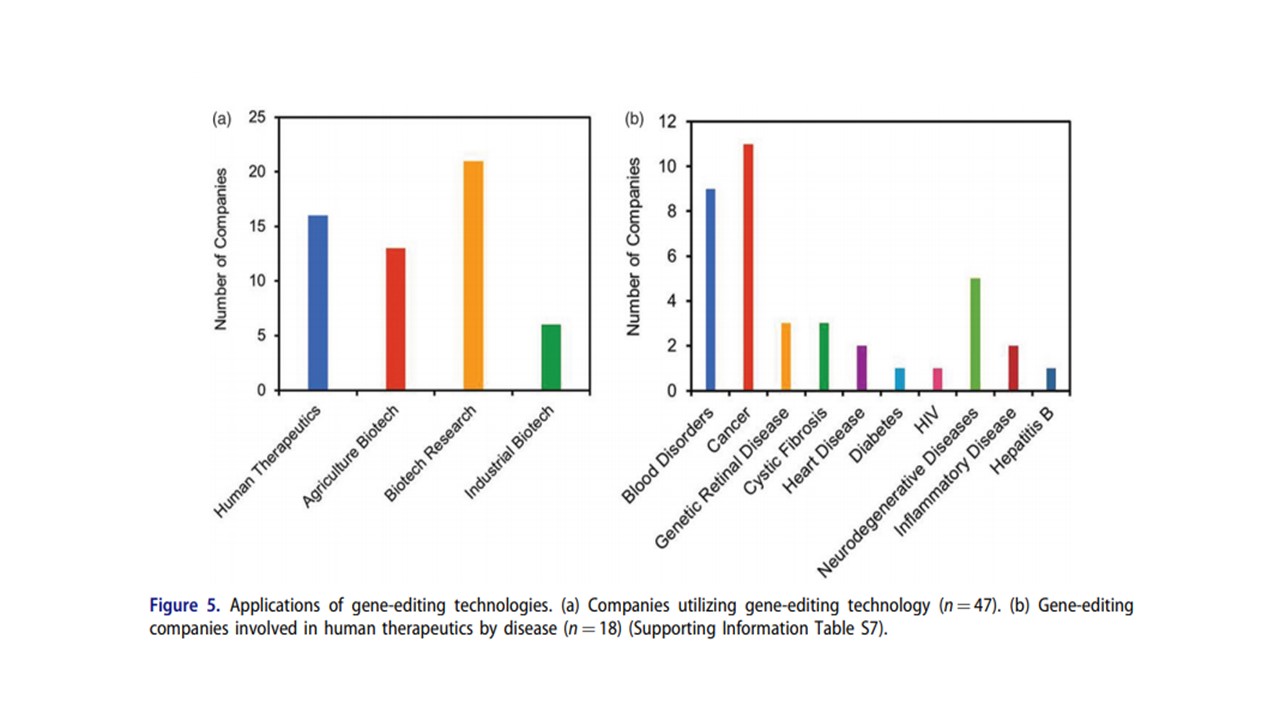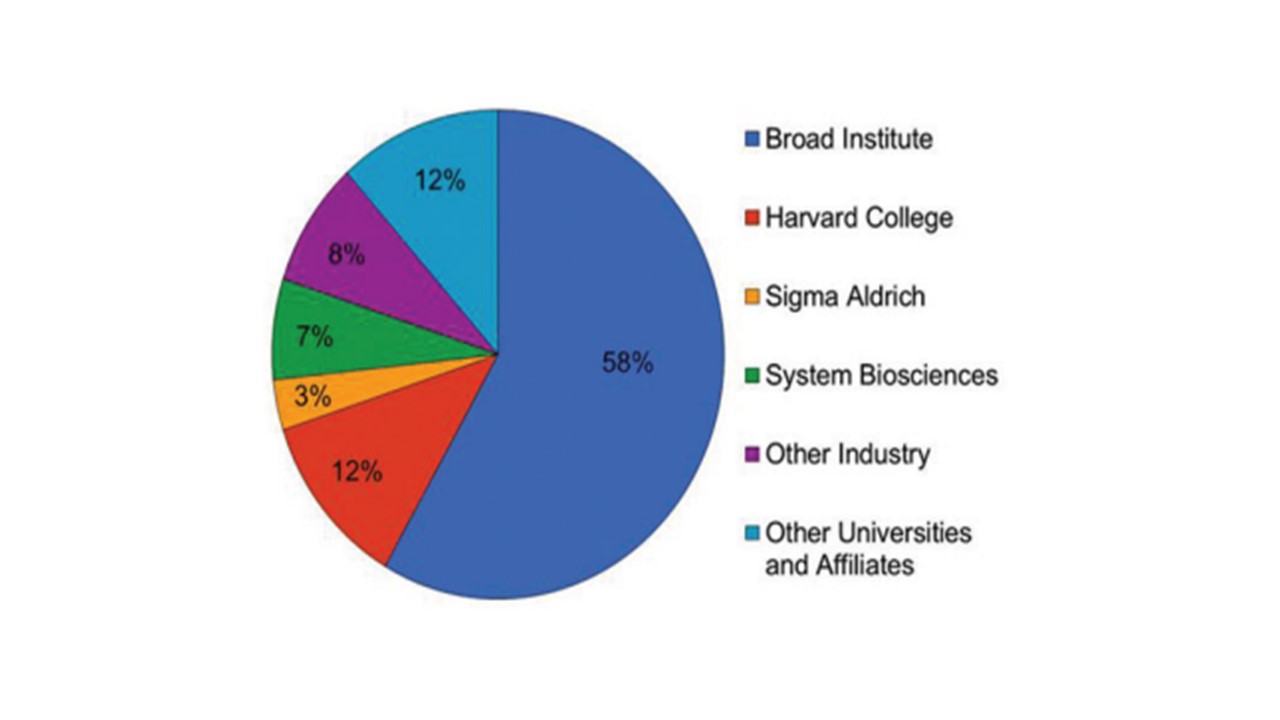Gene Editting: The CRISPR Boom
CRISPR Gene Editing: Market Value and How it Works
CRISPR gene editing technology is creating a boom in pharmaceutical and biotechnology sectors. Several market reports project a CAGR of over 30% between 2017-2025 leading to a market value of $4.09 billion (USD) by 2025. [1,2] From 2005-2013, several labs contributed to the mechanistic understanding of how the Cas9 system can selectively cleave DNA. In short Cas9, a bacterial nuclease, forms a complex with a short guide RNA (sgRNA) which targets the enzyme to a particular gene sequence where a double-strand break is created by hydrolysis of the DNA backbone as shown below.[3] DNA alterations can then be created by either non-homologous end rejoining (NHEJ) or homology directed repair (HDR) strategies. Specific gene sequences can be targeted by designing sgRNAs with bioinformatics approaches designed to limit significant off-target effects. Since the discovery, many labs have contributed clever alterations to the gene editing system to expand the accuracy, applications, and success rate of Cas9 systems through protein engineering, optimized delivery strategies, and bioinformatics improvements. Factors limiting the growth of the CRISPR market include off-target effects and delivery issues. [4]

Products and Regional Distribution
The main CRISPR products sold are generally grouped into design tools, plasmids/vectors, Cas9 nuclease and gRNA, and delivery systems. Insight Pharma Reports suggests that sales of Cas9 recombinant protein with gRNA represents 40% of the market share as well as the fastest growing segment of the market (CAGR ~36%). This value is carried by high cost relative to plasmid approaches and rapid turn-over of products.[5] In contrast to IPR, PRNewswire published that design tools are the leading market segment led by Thermo Fischer Scientific.[6] The majority of sales is currently taking place in North America with several European companies investing in new CRISPR-based tools.[6] However, the fastest growing region in the CRISPR market is the Asian Pacific markets.[5]
Biomedical and Agricultural Applications
According to Grand View Research, biotechnology and pharmaceutical organizations account for the largest share of the current market. Creating cell lines and transgenic disease models at universities and companies make up the majority of this market.[1] In addition to biomedical applications, the agriculture sector has started to implement CRISPR in order to engineer plants for disease resistance, biofuel production, synthetic biology, phytoremediation, and abiotic stress tolerance. CRISPR provides an intriguing tool for agricultural improvements amidst climate change difficulties especially in third-world counties whose economies are agriculturally centered. [7] CRISPR applications are illustrated below. [7]

Rapidly Evolving Patent Landscape
Leading companies with IP on CRISPR tools raised over $600 million USD in venture capital and public market investments in 2015.[8] The majority of IP filed for CRISPR tools up to 2015 has come from the Broad Institute (shown below) with a variety of exclusive and non-exclusive licensing agreements. [7] The success of the Broad Institute in commercialization has been built around their keystone patent (patent no. 8,697,359) with a variety of additional IP in their patent portfolio. Several patent litigation cases are ongoing that are reshaping the IP landscape and setting precedent for future genome editing IP. One of the most pivotal cases was the recent victory for the Broad Institute over UC Berkeley in their patent litigation dispute. [9]

Clinical Use Controversy
Last year, CRISPR hit mainstream news when scientist He Jiankui of Sourthern University of Science and Technology in Shenzhen, China announced that he performed CRISPR editing to genetically modify an embryo to protect the eventual twin girls from HIV harbored by their father.[10] University officials stated they were "deeply shocked" by this experiment, and Jiankui is now currently being investigated to determine if he followed Chinese regulatory procedures. Some are worried that these experiments will accelerate the path to "designer babies".[11] Meanwhile, researchers at Harvard are researching the application of CRISPR to sperm cells in order to reduce risk of Alzheimer's disease.[12]
References
1. https://www.grandviewresearch.com/press-release/global-crispr-associated-cas-genes-market
2. https://www.inkwoodresearch.com/reports/global-crispr-market/
3. https://labiotech.eu/features/crispr-cas9-review-gene-editing-tool/
4. https://www.nature.com/articles/s41467-018-04252-2
5. https://www.insightpharmareports.com/global-crispr-market-forecast-2017-2025
7. https://doi.org/10.1080/07388551.2016.1271768
8. van Erp PB, Bloomer G, Wilkinson R, et al. The history and market impact of CRISPR RNA-guided nucleases. Curr Opin Virol. 2015;12:85-90.
9. https://www.nature.com/articles/d41586-018-06656-y
10. https://www.youtube.com/watch?v=aezxaOn0efE
12. https://www.technologyreview.com/s/612494/despite-crispr-baby-controversy-harvard-university-will-begin-gene-editing-sperm/

